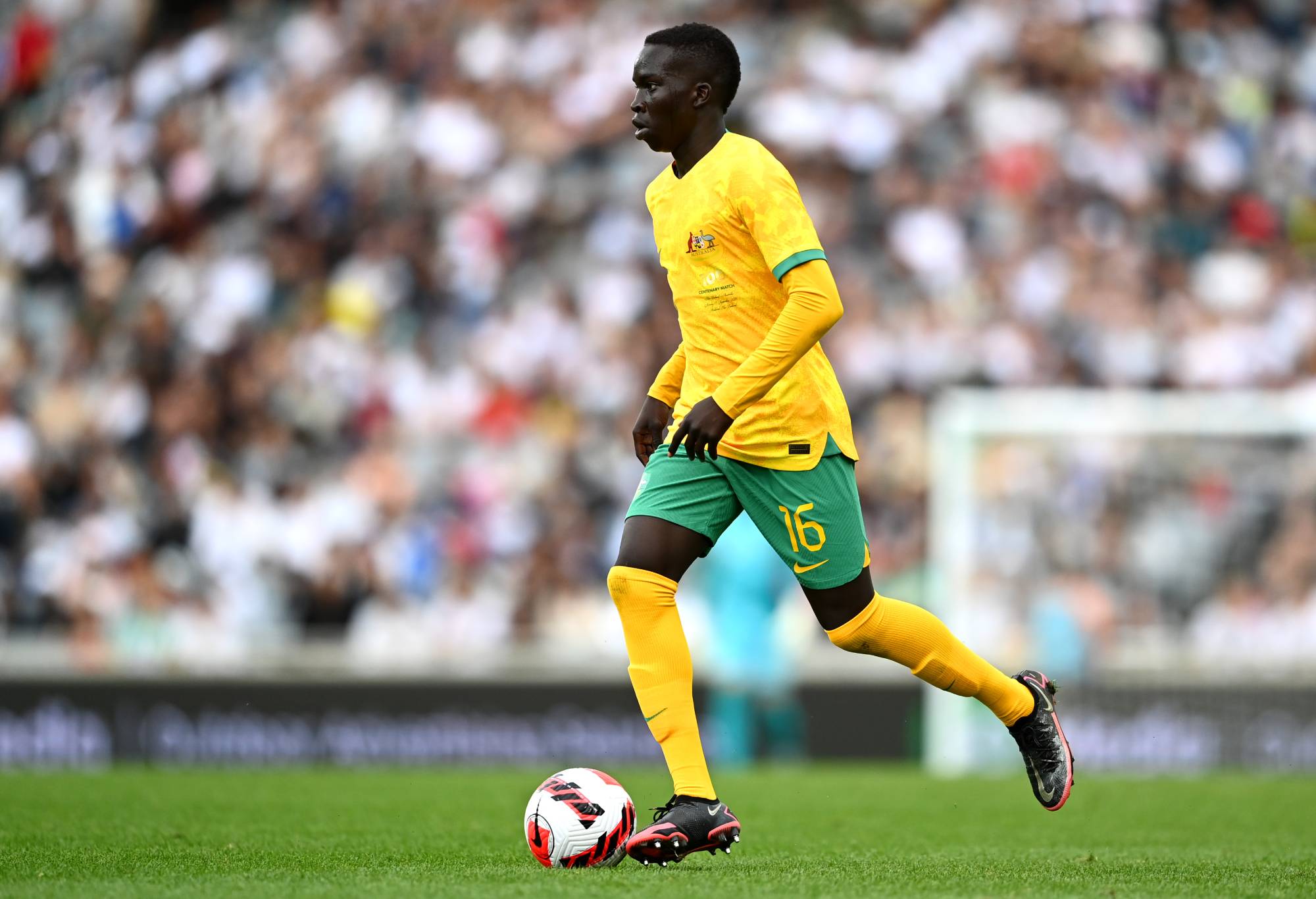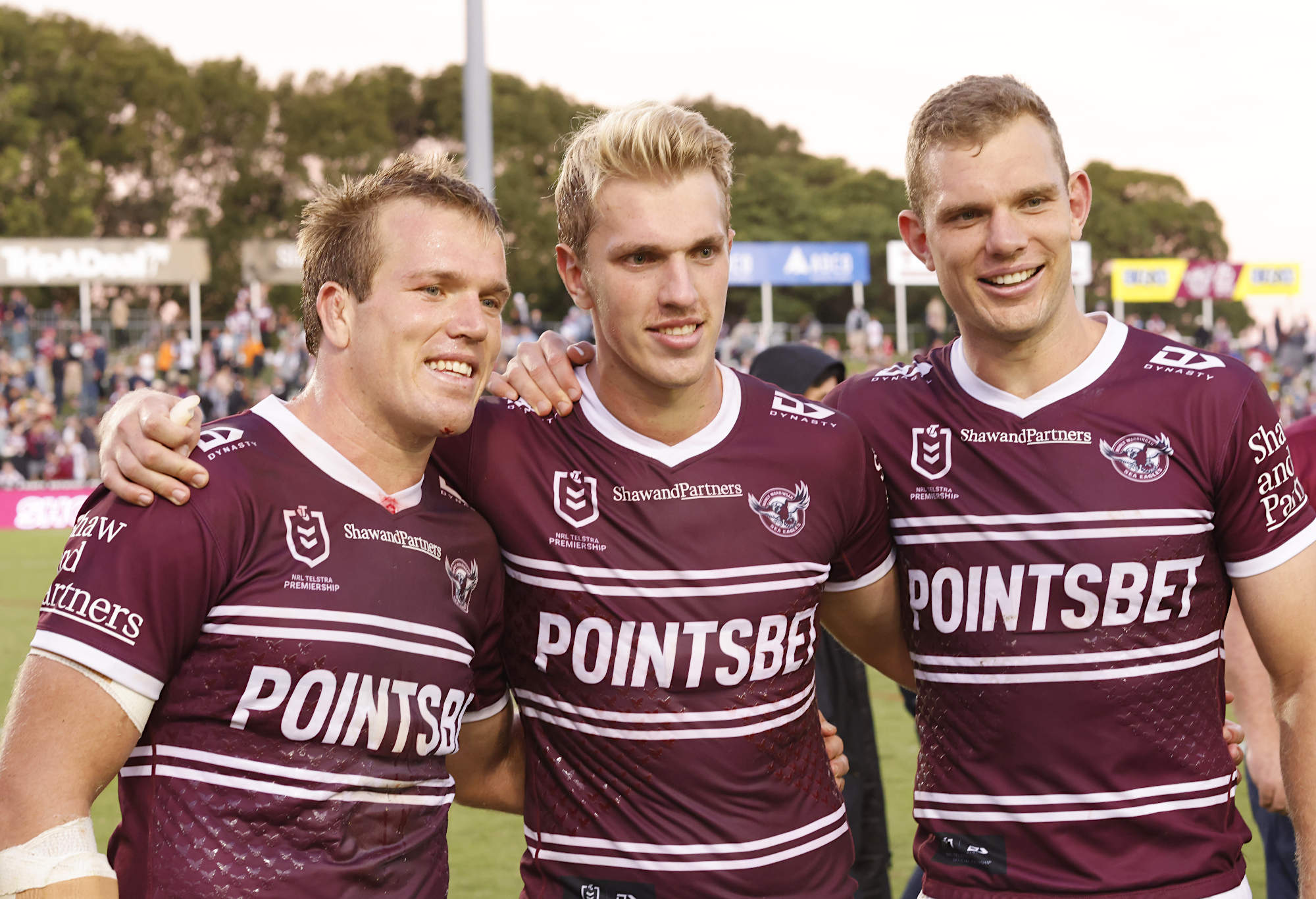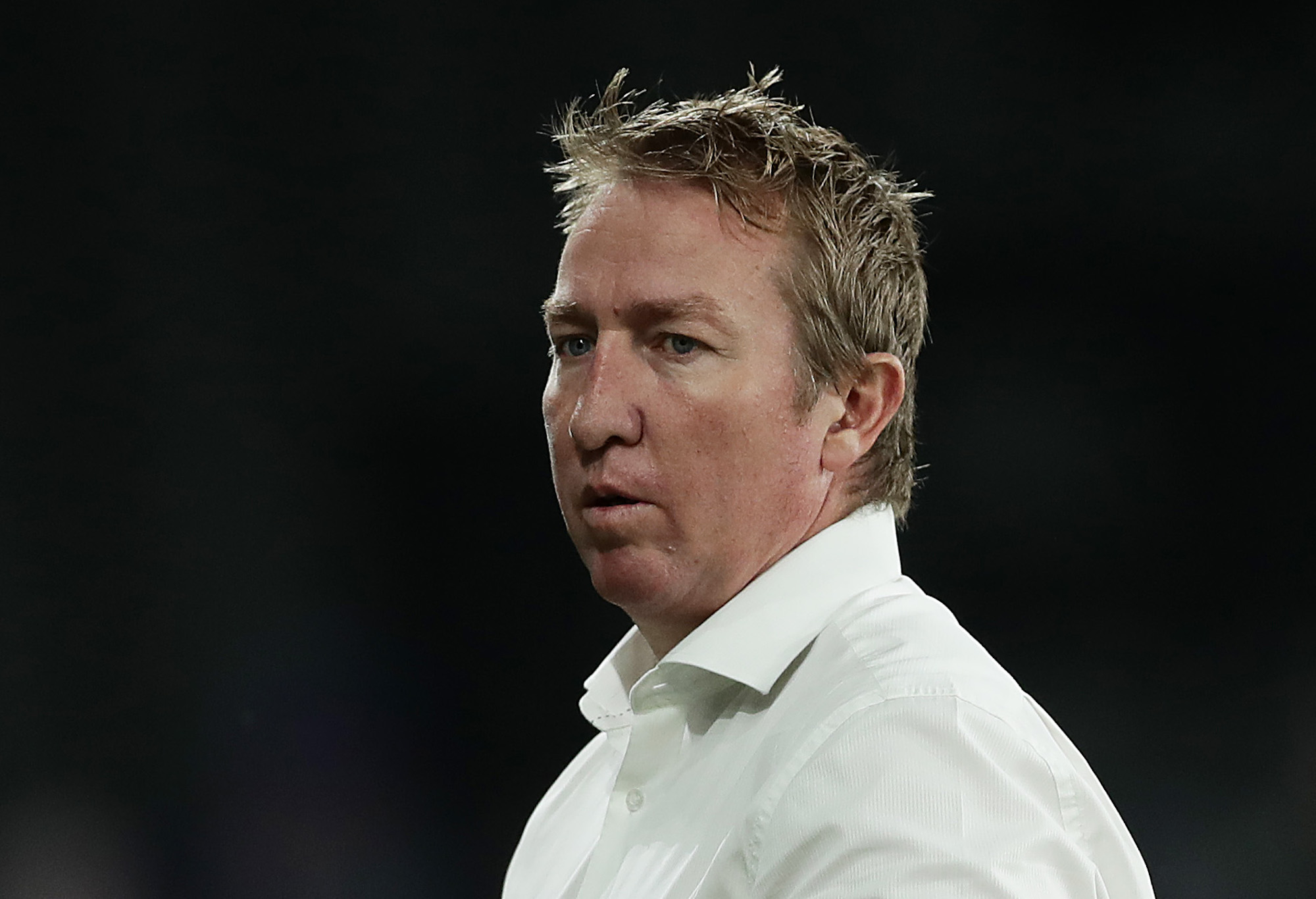If you followed the recent Rugby League World Cup, you’ll probably have noted that the tournament has both passionate supporters and vocal detractors.
Depending on who you ask, it’s either a confected travesty made up primarily of Australians pretending to be Greek, Lebanese, Samoan or Tongan, or it’s a perfectly legitimate expression of national identity and heritage that reflects the mobility and interconnectedness of the world’s population.
Whether you’re a fan or not, two things are inescapable. First, the World Cup, and international league more broadly, is built on migration. 30 years ago, it was inconceivable that Samoa or Tonga would be genuine contenders, but then Australia started to become a more service-oriented economy and needed to import workers in other sectors.
The number of Australian residents who migrated from Melanesia and Polynesia has been growing steadily in that time and at a greater rate than migration from many other regions. In 2018, the UN’s International Office for Migration estimated that ’13 per cent of the Tongan population aged 20–45 emigrated to work in Australia and New Zealand’.
There’s also the complicated legacy of post-war migration from the Caribbean to the UK, including the thousands of Jamaicans who took up the offer of work in occupations like transport and health services as England recovered from the conflict.
Then, of course, there’s the long legacy of the wave of migration from across Europe that transformed post-war Australia, including my grandparents who traded soggy south Wales for sunny south-east Queensland as part of the Assisted Passage Migration Scheme in the late 1960s. Unfortunately, we didn’t produce any Australian or Welsh internationals, but not for want of trying.
Also worthy of note, albeit for different reasons, is France, whose football has long been influenced by the country’s external territories and historical links to Africa – the 1998 world cup winners included players originally from Ghana, Senegal, Guadeloupe and New Caledonia, and the French squad at the 2021 Rugby League World Cup included players originally from Mali and French Guiana.
While international rugby league will always be built on migration to some extent, patterns of international migration change and that word ‘legacy’ might become a problem for some of the national teams who just competed in England, as familial links become more distant, and absent the development of vibrant domestic leagues.
Leaving aside domestic development prospects among tier two and three nations, what does the data on current trends in international migration suggest about the future of international league and the World Cup? What nationalities might Australian and English players ‘pretend’ to be in 30 years’ time?
The Australian connection
Predicting the future is fraught with difficulty. A lot could go wrong and there’s at least a chance that 30 years from now we’ll be cowering in the smoldering ruins of civilisation.
On a less gloomy note, civilisation and rugby league could survive largely intact, and if they do, the USA, Australia, the UK and France will likely remain among the leading nations in terms of net international migration.
It’s not inconceivable that Australia’s cricketers could one day face a reasonably competitive national cricket team from the USA, built on migration from south Asia.
If like me you follow Australian football, you’ll have noted with considerable excitement the recent development of young players of African origin and heritage, headlined by the sublime Garang Kuol who’s currently on assignment in Qatar with the Socceroos.

(Photo by Hannah Peters/Getty Images)
Based on the data, the future of Australian football is likely to also have a distinctly South American flavour. It’s possible the next Lionel Messi or Ronaldo Nazário has already been born in the suburbs of Brisbane or Sydney.
The rate of migration from both Africa and South America is significantly outpacing that from Europe and North America, with the number of Australian residents hailing from South America more than doubling in the last 15 years. Migration from Southern Europe has declined significantly in the same timeframe.
So, what does this mean for rugby league? If past experience is any guide, football is a magnet for new migrants, but in a generation or two cultural forces – education, friends and media – and broader financial incentives have an effect and push young athletes toward other sports.
It’s possible to observe a progression. Italy has played at multiple World Cups and Greece has just made its debut. While I don’t know all the details, both appear to have reached the world stage through players a generation or two removed from the mother country. On current trends and eligibility criteria, neither nation can rely on a sustainable pool of heritage players from Australia.
Lebanon has impressed at the last two tournaments and might be reaching a maturity phase, with the number of Lebanon-born Australians increasing in recent years after a decline in the late 1990s. They currently have a strong pool of quality, young NRL players and should have at least a couple more generations to choose from.
One of the next two editions of the World Cup could well feature Serbia, especially if heritage players like the Trbojevic brothers, Nick Cotric and Tom Opacic turn out in qualifying.

(Photo by Mark Evans/Getty Images)
An intriguing prospect is Bosnia and Herzegovina. They have a current world ranking, by all accounts a domestic league and, if the data is anything to go by, most of the folk who fled the ghastly conflict of the 1990s and eventually settled in Australia have stayed. One can only hope that this gets them past the likes of Scotland and Ireland before too long.
But three decades from now, cantankerous internet commenters could well be decrying the confected nature of rugby league teams from Brazil, Ghana and Nigeria.
The number of Brazil-born residents of Australia has exploded in that 15-year timeframe, from 9215 in 2005 to 51,640 in 2020. They have a current men’s world ranking, they fielded a team in the 2021 women’s tournament and have that growing international diaspora. It looks likely we’ll have a few more Ronaldos and Pelés in the NRL in the not-too-distant future.
Ghana and Nigeria have smaller but rapidly growing diasporas. Both already have international rugby league rankings and appear the most likely among the game’s tentatively developing nations in Africa to be bolstered by future heritage players.
Back home, both nations are members of the Commonwealth, largely English-speaking and with increasing cultural connections to rugby league heartlands. Unlike South Africa, they’re relatively unencumbered by historical relics like rugby union. I’m backing them in for RLWC 2053.
The UK connection
My predictions regarding Australia’s future contribution to international league also apply to the UK, just to a lesser extent given the league’s geographical profile in England and the prominence of the Premier League.
But there’s another standout nation from the UK perspective. If you’ve followed the country’s crazy politics in recent years, you’ve probably heard the yarn about the UK being overrun by hordes of Polish plumbers. It sounds like something out of a Monty Python skit.
Cynical politics aside, there is a significant population of Polish-born people in the UK – well over 800,000 according to the official data – and some are already making an impact in rugby league, most notably Leeds Rhinos prop and England international, Mikołaj Olędzki.
Poland is currently ranked 22nd in the world, just behind Jamaica and the Cook Islands, and while you might have missed it due to the World Cup, they just had a big win over Norway in the Narvik Cup, with Keighley’s Kyle Kesick leading the charge.
It seems inevitable that more will follow the likes of Olędzki and Kesick, and that some of the children and grandchildren of those Polish plumbers will play at a world cup one day.
The French connection
France isn’t here because of what it might contribute elsewhere. At best, the domestic league might contribute a few depth players to emerging nations, while any decent non-French player who spends more than a few seasons with Catalans or Toulouse will likely end up playing for Les Chanticleers through residency – see Samisoni Langi, Clint Greenshields, Mark Kheirallah, Et Al.
I’ve written previously about the encouraging signs coming out of the French league. The modernisation of the governing body, appointments like Trent Robinson, the success of Catalans and the progress, albeit patchy, of Toulouse, the production of players like Ben Garcia and Tony Gigot who NRL clubs have at least been interested in, and the potential of Arthur Mourgue.
There’s also been some indication, including research commissioned by the French Rugby League Federation, that after decades of stagnation the game’s starting to grow its audience and reach in France.
The presence of Guiana’s Gadwin Springer or Mali-born Justin Sangaré in the national team squad might not mean much in this regard. They might just be two kids who came to France and fell into rugby à treize.
Then again, there could be a little more to the story. It’s just over a decade since rugby league finally became an official part of the physical education curriculum in French schools and it might be starting to bear fruit. Maybe more migrant kids who’ve historically tended to opt for the familiarity of football or the greater social capital of union are choosing league.
Sangaré himself seemed to confirm in a recent interview that he quit football for league after Toulouse Olympique visited his school. Give it another 30 years and France could once again be a force, powered by a revitalised domestic scene and some talented young athletes from abroad. Stranger things have happened in French rugby league.

(Photo by Mark Metcalfe/Getty Images)
The Rugby League World Cup 2053
So, who might compete for the Paul Barrière Trophy in 2053, when Josh Addo-Carr is freshly installed as President of Australia, Jared Waerea-Hargreaves is ruling rugby league with an iron fist as Chair of the ARLC, Paul Gallen’s preparing for his latest comeback to the boxing ring, and St George Illawarra is recovering from yet another premiership triumph under master coach Jason Nightingale?
The certainties: Australia, New Zealand, England, France and PNG, with the bulk of PNG’s squad drawn from the PNG Hunters of the NRL.
The probables: Samoa, Tonga and Fiji. Nothing in international migration, economic development or even international rugby league’s tiering system is certain, and it’s primarily uncertainty about the tiers and future incentives for elite players that sees these three relegated to probable status. Even so, one or more could enter 2053 having previously won a world cup world title.
The likely: Lebanon, Wales, Poland and Brazil. Primarily heritage teams drawn from Australia and England.
The just qualified: Italy, Ireland, Ghana and Nigeria. Italy and Ireland should still be just hanging on primarily due to migration to the UK. Ghana and Nigeria will be on the rise.
Missing out: Greece, Jamaica and the Cook Islands, among others, might struggle to sustain competitive international diasporas and the development of strong domestic leagues seems unlikely.
Should such a tournament ever come to pass, I imagine everybody would be happy. International league connoisseurs could savour a tournament forged by both the traditional English and Australian clubs we love and the wider world.
The game’s vocal detractors would have no shortage of things to deride. Bring it on!































































































